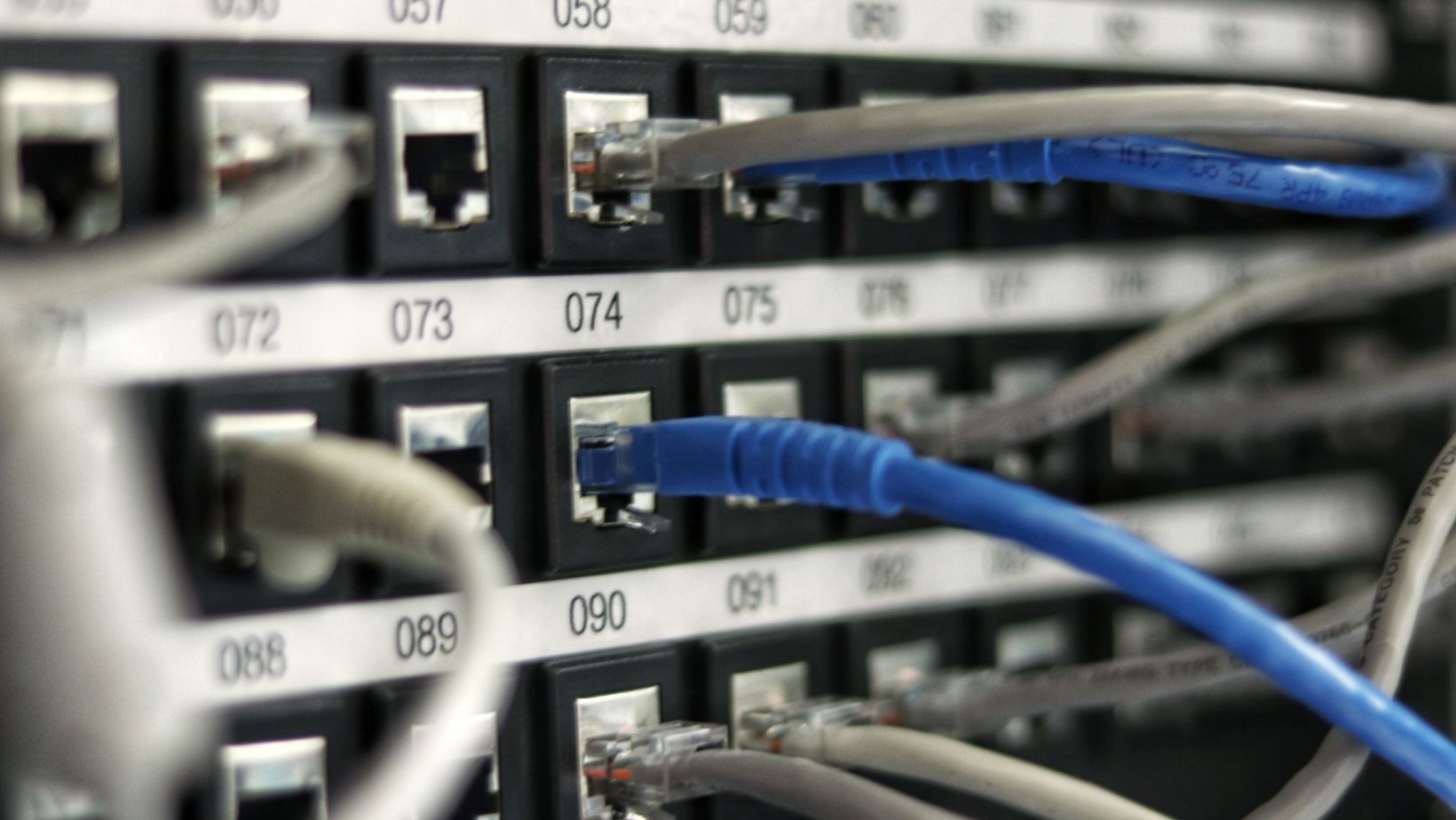What Does it Mean When a MAC Address Lookup Returns a Result of No Vendor Listed?

Introduction
In the vast world of networking, the MAC Addresses play an important role in facilitating effective communication between the devices. A MAC Address is a unique identifier for each network interface card (NIC), allowing devices to distinguish and interact with each other.
The concept of MAC Address Lookup holds significance in network management and troubleshooting as it helps in identifying the manufacturer of a network device.
Our article will revolve around the complexities of MAC Addresses, the purpose of MAC Address Vendor Lookup, the cases where that lookup is valuable, and what if the result is not found in the MAC Address Vendor Lookup Database.
What is a MAC Address?
The Internet is a network of networks, and there are billions of devices connected through it. And increasing on a daily basis. So the question is, how is it possible that each information (packet) reaches its particular destination? Here is where MAC Address plays its role.
A MAC Address is composed of six pairs of hexadecimal digits, typically represented as XX:XX:XX:XX:XX:XX. That address is divided into two parts. The first three-pair set of hexadecimal digits (XX:XX:XX) is called an Organizational Unique Identifier (OUI). The remaining set of three pairs is called Network Interface Controller (NIC). The OUI points to the manufacturer of the network device, while the NIC part defines the individual devices from the same manufacturer.
Importance of MAC Address Vendor Lookup
The MAC Address Vendor Lookup tool facilitates finding the manufacturer of a network device from its MAC Address. This information is helpful for various reasons, some of which are
- Troubleshooting network issues
- Managing devices in a network
- Enhancing security measures
Overall, by knowing the vendor, the network administrators can easily identify the device on the network and can solve the connectivity problems effectively.
How Does MAC Address Vendor Lookup Work?
MAC Address Vendor Lookup is possible through online tools that have access to specialized databases having an extensive collection of MAC Address information. These databases maintain the record of MAC Addresses and their respective vendors. When you provide a MAC Address to any vendor lookup tool, it performs the MAC Lookup in its connected database, thus revealing the manufacturer’s identity.
Common Results of MAC Address Lookup
When the MAC Address Lookup is performed, it yields the name and details of the recognized vendor along with some other information. This aids administrators in identifying the origin of a particular device in their network. This outcome is especially helpful in easily recognizing and addressing network-related issues.
If the MAC Address Lookup Returns a List of No Vendor Listed: Possible Explanations
However, there are instances when a MAC address lookup fails to yield any vendor information, resulting in a “no vendor listed” response. This can lead to confusion and questions about the device’s legitimacy. Several factors could contribute to this outcome:
There will be rare chances when the MAC Address Lookup fails to yield any vendor information and provides a “No Vendor Listed” result. However, such results can lead to confusion and raise questions about the device’s legitimacy. There are several factors that can lead to such an outcome; some of them are
1: New or Uncommon Vendors
If the network device comes from a relatively new or less common manufacturer, their details might not be present in the database, leading to an absence of vendor information.
There may be a chance that the network device comes from a relatively new or uncommon vendor whose details are absent in the Vendor database. Such cases can lead to such results.
2: Incomplete or Non-Standard MAC Address
What if the provided MAC Address is either incomplete or does not follow the standard format? In such cases, the tool might fail to identify a corresponding vendor.
3: Unregistered MAC Addresses
Some network devices use locally administered MAC Addresses (usually for testing purposes) that are not available in the MAC Address Vendor Database. As a result, no vendor information will be available for these addresses.
4: Privacy Features
Manufacturers are increasingly implementing privacy features that limit the exposure of their MAC address information. This scenario results in a “No Vendor Listed” response, as the manufacturer’s details are intentionally hidden.
Importance of Context
It’s important to understand that the absence of vendor information does not always mean “there is some problem.” Some devices might intentionally keep their vendor information hidden, while some vendors are uncommon or new in the market. Understanding the purpose will help in better knowing where the problem lies.
Important Steps to Troubleshoot Such Issue
Having a “No Vendor Listed” result in a MAC Address Vendor Lookup does not have to be a dead end. Here are some steps you can take:
1: Verify MAC Address Accuracy
Ensure that the MAC address entered for the lookup is accurate and complete. Even a single digit missing can lead to inaccurate results.
2: Check Variations
Some lookup tools might list vendors under slightly different names or variations. Double-check for alternative spellings or abbreviations.
3: Try Different Databases
Use multiple MAC Address Lookup databases or tools. Each might have varying data, thus increasing the chances of finding vendor information.
Future Trends
Because of technological advancement, the accuracy and coverage of MAC Address Lookup tools are likely to improve. With the expansion of the Internet of Things (IoTs) and diversification among the devices, the vendor databases include a broader range of vendors, leading to more comprehensive and accurate results.
Conclusion
In this intricate world of networking, MAC Address Vendor Lookup serves as an important tool in identifying the manufacturer behind the network device.
However, facing “No Vendor Listed” results might create some ambiguity. Thus, it’s important to first check the actual problem that lies under those results and then take some vital steps to overcome that.
FAQs
Q1: Is a MAC address the same as an IP address?
No, the MAC Address and IP Address are both different. MAC Address is a hardware or physical address assigned to a network interface card, whereas an IP Address is a virtual or logical address assigned to each device on the network. However, both work together to make effective communication possible.
Q2: Are MAC addresses permanent?
MAC addresses are typically burned-in or hard-coded into the hardware of network devices by manufacturers. They are generally considered permanent, but there are some techniques with which you can change them.
Q3: Can I use MAC address vendor lookup for cybersecurity?
Identifying the manufacturer of devices on your network can help you spot unauthorized or potentially malicious devices. However, keep in mind that it’s just one aspect of a comprehensive cybersecurity strategy.
Q4: Why might a device have a locally administered MAC address?
Locally administered MAC addresses are often used for specific purposes, such as testing or configuring devices. They are not registered with public databases, which is why they might result in a “No Vendor Listed” response.
-
Personal Finance12 months ago
How Do I Find My UCAS ID Number?
-
Success6 years ago
Consistency: The Key Ingredient to Success
-
Personal Finance12 months ago
What Does Conditionally Approved Mean For An Apartment?
-
Motivation3 years ago
How To Become a More Organized Person?
-
Others5 years ago
Work Health and Safety: 8 Reasons to Maintain a Clutter-free Office
-
Entrepreneurs4 years ago
Why Diversity is Key in Business Marketing
-
HK Pools1 year ago
The HK Pools Forum Comunity Jos Markotop 2D Warna Kuning – A Great Way to Stay Connected
-
Sport2 years ago
What Makes Soccer Betting So Great?



























